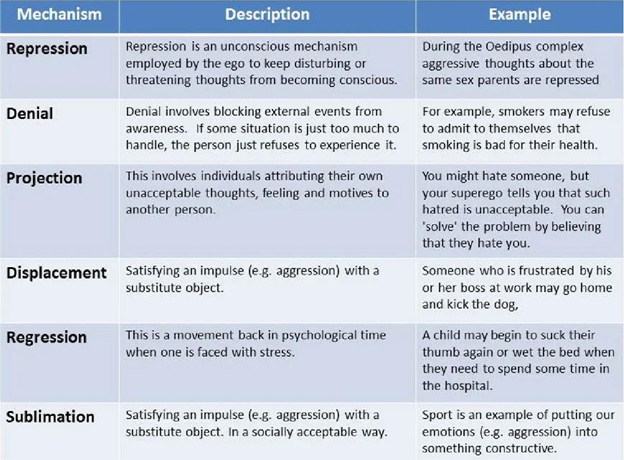A nurse is caring for a client who has bipolar disorder. The client yells at the nurse whenevermedication changes are prescribed by the client's provider.
The nurse should identify that theclient is using which of the following defense mechanisms?
Conversion
Splitting
Displacement
Sublimation
The Correct Answer is C
Explanation:
Displacement is a defense mechanism in which an individual redirect their emotions or impulses from their original target to a less threatening or safer target. In this scenario, the client yells at the nurse when medication changes are prescribed by the provider. The client may be feeling angry or frustrated about the medication changes but is unable to express those emotions directly towards the provider. Instead, the client displaces those feelings onto the nurse, who may be seen as a safer or more accessible target. The yelling behavior directed at the nurse is a way for the client to release and express their emotions indirectly.
Let's briefly discuss the other defense mechanisms mentioned:
A- Conversion: Conversion involves the expression of psychological distress or conflict through physical symptoms or ailments. It is not applicable in this scenario since the client's behavior does not involve physical symptoms.
B- Splitting: Splitting is a defense mechanism characterized by a black-and-white thinking pattern, where individuals perceive others or situations as all good or all bad. It does not directly apply in this scenario as the client's behavior is not indicative of splitting.
D- Sublimation: Sublimation is a defense mechanism in which an individual channel their unacceptable or potentially harmful impulses into socially acceptable outlets, such as creative or productive activities. It is not evident in this scenario as the client's behavior does not involve transforming the emotions into a more positive or socially acceptable form.

Nursing Test Bank
Naxlex Comprehensive Predictor Exams
Related Questions
Correct Answer is ["B"]
Explanation
a. Asking other group members to limit their speaking may place unnecessary pressure on the quiet client and make them feel singled out. The goal is to create a supportive environment where the client feels comfortable contributing when they are ready. Limiting the other group members' participation does not address the individual needs of the client who is silent.
b.Some clients may need extra time to process information or formulate their responses, particularly in a group setting where they might feel overwhelmed or anxious. Allowing the client extra time respects their pace and encourages participation without pressuring them.
c.Appointing the client to lead the discussion if they cannot contribute are not appropriate actions. These approaches can increase the client's discomfort and create a negative atmosphere, which goes against the principles of group therapy. It is important to foster an inclusive and supportive environment that encourages participation at each person's pace.
d.Telling a client to leave the group if they cannot contribute is not appropriate action. These approaches can increase the client's discomfort and create a negative atmosphere, which goes against the principles of group therapy.
Correct Answer is D
Explanation
The nurse should identify Naproxen as an over-the-counter product that is unsafe for use with enoxaparin. Naproxen is a nonsteroidal anti-inflammatory drug (NSAID) that can increase the risk of bleeding when used in combination with anticoagulant medications like enoxaparin. Both enoxaparin and Naproxen have anticoagulant effects, and using them together can significantly increase the risk of bleeding complications.
On the other hand, calcium supplements, docusate (a stool softener), and cimetidine (an H2 blocker) do not have direct interactions or pose significant risks when used with enoxaparin. However, it is always important for the client to inform their healthcare provider about all medications, including over-the-counter products, they are taking to ensure there are no potential interactions or contraindications specific to their individual situation.
Whether you are a student looking to ace your exams or a practicing nurse seeking to enhance your expertise , our nursing education contents will empower you with the confidence and competence to make a difference in the lives of patients and become a respected leader in the healthcare field.
Visit Naxlex, invest in your future and unlock endless possibilities with our unparalleled nursing education contents today
Report Wrong Answer on the Current Question
Do you disagree with the answer? If yes, what is your expected answer? Explain.
Kindly be descriptive with the issue you are facing.
